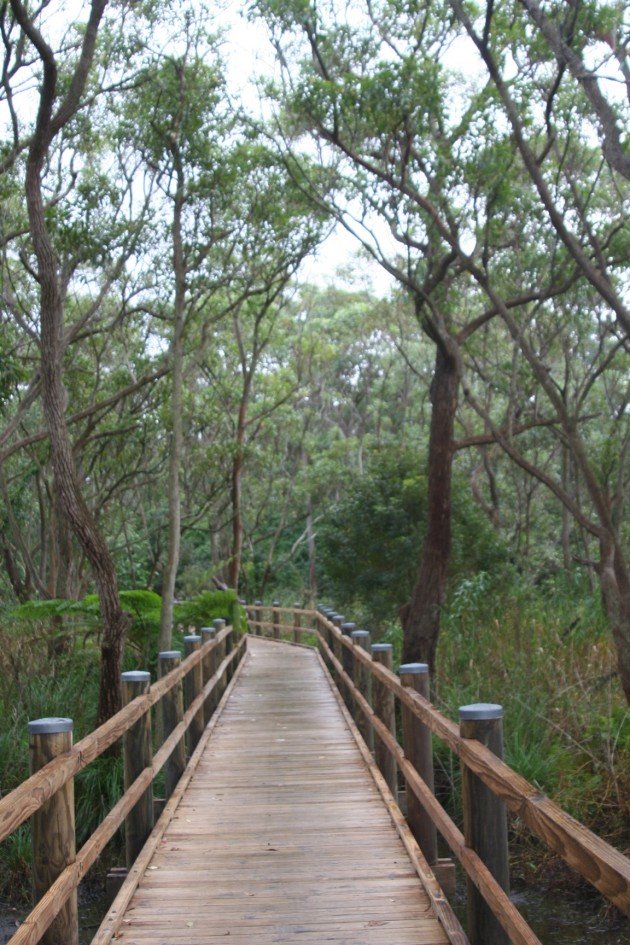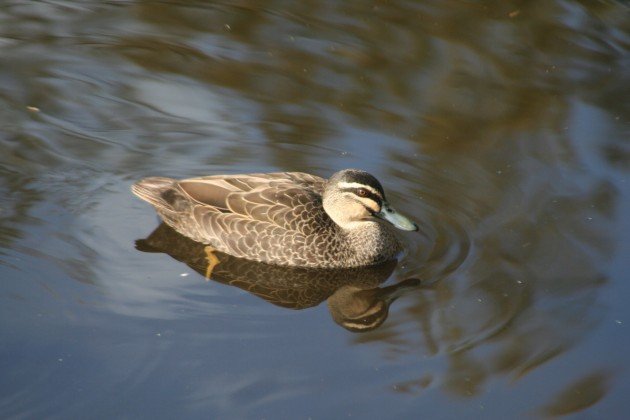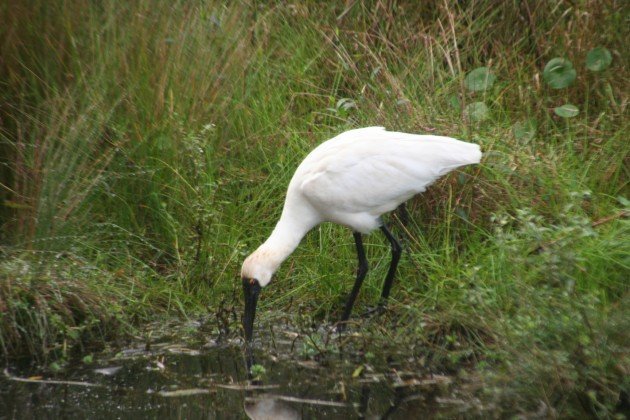
The North Shore of Sydney is, as I’ve often observed, a great place to watch birds. On my last visit, which lastes four days, I didn’t have much time to sneak away from family, but I did get to check out two new sites. One, Warriewood Wetlands, was a site I had tried to visit before only to get lost. This often happens to me, because I’m rather vague. I once visited Crooked Tree in Belize for a few days without hitting any of the great spots because I didn’t really know what I was doing. In fact, not being able to translate the sometimes vague instructions I find on sites or books into an actual place when I get there is a permanent worry when planning trips. The book says there is a trail in location X, 220 metres past bend Y. That never seems to work for me. I still see things, but I’m always left with the nagging suspicion I am missing a lot.
This time , thanks to a GPS doohickey in my car, I actually managed to find the wetlands, and they were actually worth a visit. The reserve protects a stand of mahogany swamp that attracts large numbers of nectar feeding birds when they flower in the winter. As soon as I entered the forest from the road the din of these birds was almost deafening. Most conspicuous were huge numbers of Red Wattlebirds and Rainbow Lorikeets, common enough Sydney birds. But once you looked harder you could pick more out. Silver-eyes, the common species of white-eye, were common as well, and a Grey Fantail was swooping around in typical style. Then there were the honeyeaters; first the also entirely ubiquitous Nosiy Miners, but then a Yellow-faced Honeyeater. A White-cheeked Honeyeater; a species I had never seen away from coastal heath! Another heathland specialist, the Eastern Spinebill. Then a pair of species I more readily associate with the tropics, a large if nondescript olive coloured Lewin’s Honeyeater, and the very bright Scarlet Myzomela. Among the mess of honeyeaters were other attractive birds, including the Yellow Warbler-like Yellow Thornbill, the large and loud Eastern Whipbirds (three seen, a pretty good score for that species!), Australian Magpies, Welcome Swallows and the always common but never unwelcome Sulphur-crested Cockatoos.
The Swamp Mahoganies opened up into open water and reeds, and different birds were there for the watching. Most obvious was a large and attractive Royal Spoonbill, which allowed close approach as I moved along the broadwalk. There were also several Grey Ducks and even a Mallard or two, mercifully the two hadn’t started interbreeding yet in Australia like they have in New Zealand. Eurasian Coots, Dusky Moorhens and Purple Swamphens represented the more visible end of the rail spectrum, and perhaps best of all, or worst of all, was a rat. Which may have been just an introduced Brown rat, but it also could have been a Native Water Rat. It was certainly swimming around a lot. I can’t say for sure, so I’ll assume it was the native species, because that’s nicer.
Grey Duck, or Pacific Black Duck
Royal Spoonbill
There was one last surprise on the way back to the car, high up in the Swamp Mahoganies, among the hordes of Rainbow Lorikeets, were a trio of Musk Lorikeets. They were easy to separate from the Rainbows, but harder to distinguish from the commoner Little Lorikeets that could also be found here, since the wretched things would not stay still. Still, I eventually managed to pin them down long enough to separate them.
After Warriewood I made a quick trip to Long Reef, a pencil of land sticking out into the Tasman Sea near the community of Dee Why. I could see why the location was a popular birding spot even in the thirty minutes I spent there, wedged as it is between a beach and a golf course. It’s the place to go to if you want to sea watch, and lacking as I did a spotting scope I was disadvantaged, insofar as I was unable to work out which species of albatross it was I saw out of the many that soared past the headland. But there were a lot of albatrosses, and if writing here has taught me anything, it is that any day I see an albatross is a day that Corey hasn’t seen one. There were other birds too, including several Willy Wagtails that had decided that rather than being diminutive landbirds they felt like trying life as a shorebird. I was also able to pick out some Australian Pied Cormorants, Great Cormorants, Caspian Terns and Great Crested Terns. And finally, one of my target species for the site, the rather rarer Sooty Oystercatcher. There are other specialities here that are worth searching out, but I had a flight to catch. Still, the place is worth a look for visiting birders wanting to pick out some pelagic species.
















Nice place for getting lost!